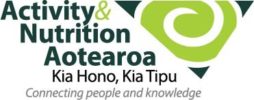28 Jan NZ’s biggest water fountain survey reveals 41 ‘bonus’ fountains, but work still to do
For the second story in our series about the Wai Auckland project, we look at the project’s research into Auckland’s drinking water fountains.
If you’re struck by thirst while out and about, but have no idea where to find your nearest drinking fountain, you could be forgiven.
When Wai Auckland began, the project didn’t have a good understanding of the number or condition of the region’s public drinking water fountains either.
Project manager Amanda Brien says the answer was to conduct New Zealand’s biggest drinking water fountain survey, using Auckland Council’s database as the starting point.

“With help from the University of Auckland we evaluated 282 fountains by testing whether they worked, assessing how the water flowed and describing how they looked.”
The survey found that a third of the fountains needed maintenance – something that caught the attention of media and resulted in a page three New Zealand Herald story.
“It wasn’t the headline we might have liked, but it did prompt conversations about the important role of these valuable public assets and lead to more coverage,” Amanda says.
As part of its work, Wai Auckland also realised that many people didn’t know how, or where, to find drinking water fountains.
“So we teamed up with the University of Auckland again and a student developed a business case for the inclusion of fountain location data on the AKL Paths website.”
At the outset of the research, Amanda says the project knew of 346 Council-owned assets.
“But as a result of the study, we discovered another 41 drinking fountains in public spaces and now have a database of 387,” she says.
How many fountains are enough?
Almost 400 fountains may seem a lot but – compared to other places of a similar population, like Brisbane City or the Yarra Valley Council area in Melbourne (each with around a thousand fountains) – Auckland has a way to go.
And currently there are no guidelines for drinking fountain provision in Auckland, meaning they’re not well (or equitably) distributed across the city, or easily identifiable.
Amanda says Wai Auckland has surveyed people’s preferred fountain locations and a business case has been developed to improve fountain provision.
“If we want tap water to be the most convenient option for people, we have to make it readily available to them, wherever they are.”
She says the plan is to pilot the business case with Council Local Boards who have identified a need for drinking fountains in their areas.
“It can be too expensive to retrospectively install drinking fountains if earthworks and new plumbing are needed, so it’s an important factor to consider at the start of any planning process.
“And we also have plans to ‘jazz up’ existing infrastructure; a lot of fountains don’t stand out in the concrete jungle of the city, so we want to make them more visible and appealing to passers-by.”
Indoor outdoor flow
Wai Auckland hasn’t just looked at parks and outdoor spaces though, it’s also investigated the availability of indoor drinking fountains in shopping centres.
“From this work, we found that only two of the region’s 31 shopping centres had drinking fountains customers could access,” Amanda says. “So we’re planning on working with shopping centre owners to increase those numbers.”
Amanda says Wai Auckland’s knowledge of the complexities of infrastructure work has grown immensely during the project.
“We now have a good understanding of where fountains should be to maximise their use, and the features they should have to make them most convenient to consumers. Now it’s about making that happen.”
Want to know more? Get in touch with Amanda Brien for more information.

